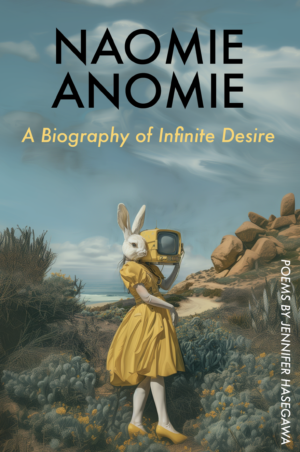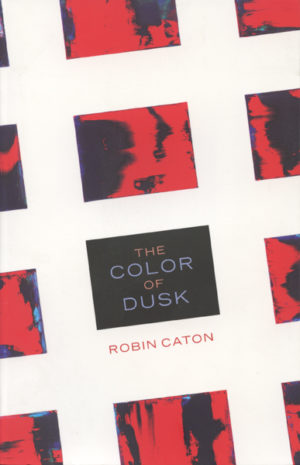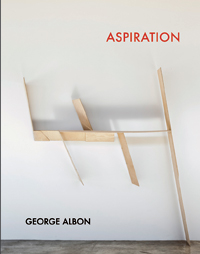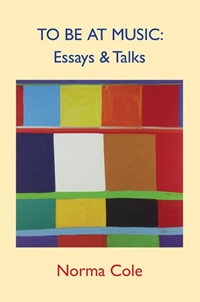Description
from unincorporated territory [lukao] is the fourth book in native Chamorro poet Craig Santos Perez’s ongoing series about his homeland, the Western Pacific Island of Guåhan (Guam), and his current home, Hawaiʻi. He utilizes eco-poetic, decolonial, diasporic, indigenous, documentary, epic, and avant-garde modes to weave stories of creation, birth, migration, food sovereignty, and parenting. This work not only protests the devastating impacts of colonialism, militarism, and environmental injustice across the Pacific, it also expresses a vision of a sustainable and hopeful future.
Perez writes “Hinasso” (imaginaton, thought, memory, or reflection) painted forwards+backwards and out-scribed in multiple dimensions. Yes, it is true and possible in the land of the Chamorro, in the terrain, mind, culture once colonized, “kidnapped,” and now re-called and re-created by its own will-spirit walk here, in this “procession,” in this knowledge-song, carved Chamorro walk-talk-map. There is birth, incision, interview, and voice-with-voice and the ripping out of origin charters faked and overlaid over the roots of Guam. As pilgrimage steps are drummed with sacrifice and vision-life, you too must walk these lines that Perez offers. An impossible sacredness in this book, drawn from the collective-body-cartography, is written. Ground-shaking, delight of breath and ecstatic heart. Mahalo, Craig Santos Perez, Mahalo for lifetimes.
Juan Felipe Herrera
This fourth collection, unincorporated territory [lukao] by Craig Santos Perez, marks a dramatic shift in this “unincorporated” series. Four marks stability, a coming of age, and these poems map a kind of ceremonial establishment of a person becoming in his/her community. This book is an essential creation story, which is about the birth of a daughter, who is also the ocean, who is evidence of ancestors and ties back to the beginning. Therefore, the poet, family, ocean, earth, and readers are in procession to understanding, despite environmental assaults that include ubiquitous consumption of Spam, and the poisoning of food and the ‘aina in indigenous communities for money profit. This collection is also praise song of becoming for a daughter, so that she knows who she is and where she comes from—What a gift!
Joy Harjo
[lukao] is the fourth in Craig Santos Perez’ brilliant series, from unincorporated territory, a lyric fusion of languages sung both forwards and backwards into ancestral and diasporic histories of the Chamorro; the birth of the poet’s daughter (wherein the poet generates a form commensurate with labor and birth); the disappearance of birds (wherein a fledgling kingfisher hatched inside an incubation machine is fed by keepers from tweezers protruding beneath the beak of an oversized kingfisher hand puppet); and, with fierce humor, meditations on the consumption of spam (wherein the poet harrowingly reveals how that canned meat gets made). With his other hand, Perez deftly provides helpful maps and island histories of colonization and militarization (wherein rain clouds baptize guam/in strontium-90 fallout). It’s all here. The island of Guam has been renamed Guahan which means we have, as in we now have in our hands the work of one of the most magically original poets writing among us.
Carolyn Forché
About the Author
Reviews
Excerpt
Craig Santos Perez, a native Chamorro from the Pacific Island of Guåhan (Guam), co-edited three anthologies of Pacific literature and authored three poetry books: from unincorporated territory [hacha] (2008), from unincorporated territory [saina] (2010, PEN Center USA/Poetry Society of America Literary Prize recipient), and from unincorporated territory [guma’] (2014, American Book Award recipient). He holds an MFA from the U of San Francisco and a Ph.D. in Ethnic Studies from UC Berkeley. He is an Associate Professor in the English Department at the University of Hawaiʻi, Mānoa,
A brief interview with Craig Santos Perez
(conducted by Rusty Morrison)
It’s very exciting for me to see the 4th installment of FROM UNINCORPORATED TERRITORY come to fruition. Each book is complete in itself, yet each certainly echoes the other three collections. We’ll talk in the next questions about the ways that [LUKAO] is unique in the quartet, but I’d like to ask first how you perceive it in relation to the project as a whole, the larger vision that these four books are a part of?
(It seems especially timely to ask this, since Omnidawn is republishing a revised and re-designed version of your first book, HACHA, originally published by TINFISH.)
FROM UNINCORPORATED TERRITORY is a series of interconnected books that I have been writing for ten years. My homeland, the Western Pacific Island of Guam, is an “unincorporated territory” of the United States, and one of the last remaining colonies in the world. My poetry is about the history, politics, culture, and environment of Guam, as well as the more personal stories of growing up on an island, migrating to California and Hawaiʻi, and protesting against the militarization and colonization of my home.
The first book, [hacha], was originally published in 2008, and the major poem in that book shares the story of my grandfather life and my memories growing up on Guam. The second book, [saina], was published in 2010, and revolves around my family’s migration story and a long poem about my grandmother’s life and several poems about food. The third book, [guma’], was published in 2014, and shares the story of my return home to Guam for the first time after 15 years away. Some of the poems continue across books, and the themes of colonization, militarization, tourism, migration, family, and indigenous activism thread the collections together.
Because this book is focused upon “procession” (the meaning of “lukao”), I have in my mind a strong sense of time’s passage, of the procession of our lives in time, and how the movement of time can carry a sense of the ceremonial, of ritual, which can have both positive and negative connotations. I have two questions about this:
My questions:
a) Can you speak to the ways that the concept of “procession” animates this work? How are you working in accord with the ideas it resonates with, and how do those ideas create counterpoints, how do you use the text to interrogate these resonances?
The title of the fourth book, [lukao], means procession. First, this refers to a procession that my ancestors enacted each year to a part of the island that is believed to be where our creation mother birthed us. At this sacred place, they said prayers and made offerings with the hope that our creation mother would bless us with an abundant year of harvest. This practice, as well as our creation story itself, was suppressed by colonial powers and replaced by Spanish missionization. This practice, as well as our creation story, has recently been revitalized. I share this story along with other processions, including my wedding, marriage, the birth of my daughter, and the tending of a garden. These joyful processions are juxtaposed by other processions, including extinction, military buildups, environmental degradation, climate change, violence, and death. Together, these processions embody cyclical concepts.
b) The sense of the “processional” calls to my mind the formal (processional) ways that meaning is brought forward and given to a reader, how the formal processes used by an author create the “procession” of meaning’s arrivals—how these are crafted by the poet. Would you speak to your use of the page, and of the formal aspects of type & text arrangement here, and the ways you deviate from standard use of various forms of punctuation? And I’m very excited by the ways you work with ‘some’ pronouns, and that process’s implications. Is there, for you, a sense of the procession in this crafting?
All of your formal choices feel deeply resonant with what I will call the creation of processions of thought, which will offer both invitation & invocation to the reader—I see these as asking her/him/them to join in viewing the processions of time that make up our lives, even as you problematize/subvert our expectations of these concepts.
I’d love to hear you speak to any of these thoughts.
Yes, I believe writing is an act of procession, and formal type and text arrangements are how I try to capture the processions of my thoughts and emotions, as well as the processions of narratives and documents. Throughout the book, there are processions between prose, lineated verse, open field, visual poetry, and strikethroughs. As opposed to standard punctuation, I use forward and back slashes to suggest the wave-like movements of space and time through the past, present, and future. The pronoun, “we,” is bracketed in my work as a way to suggest the contingent quality of the pronoun, as well as to provide protection for the [we]. The “you” is also bracketed at times when the poems are addressed to my wife, whom the book is dedicated to. I also believe that reading is a kind of procession, so I crafted a book through which the reader will experience the various processions of the forms and narratives, stories and silences, life and death.
There are a number of recurring (and formally different) poem sequences that braid their way through this text. Of course, in a short interview, we can’t discuss them all. So, I wonder if you would choose a couple/some of them, and discuss how they came into the work: how did the subject matter or form or theme of it speak to you?, why these points of address?, why now?
One sequence, titled “understory,” consists of 20 poems braided throughout the book. This series is about Chamorro and Hawaiian creation stories, falling in love and getting married, experiencing the home birth of our child, and the fears and hopes that comes with being a new parent in a time of climate change and other violences. Another sequence, titled “island of no birdsong,” tells the story of the endangerment and extinction of Guam’s native birds, as well as the story of Chamorro migration. The final poem of the book, titled “Mahalo Circle,” is a poem about gratitude and abundance in relation to the Hawaiʻi food sovereignty movement.
Would you tell me a bit about yourself? Anything about you that is not in the bio printed in the book, and that might give insight into your more personal relationship to this text?
For many years I have been involved with activism movements related to demilitarization, decolonialization, environmental justice, food sovereignty, and climate change in the Pacific. I have delivered speeches, testimonies, and poetry at the United Nations, at the Honolulu Climate March, and at many protests, rallies, solidarity events, and public hearings. Activism is an important part of my life and has deeply shaped my poetry.
I know you can’t list them all! But on first thought, on impulse, can you answer: Who are a couple of the authors, artists, thinkers, workers (in any mediums) with whom you feel a kinship? Who/What comes to mind, just at this moment: who are you reading, listening to, looking at, watching, visiting currently?
I teach a course on Eco-Poetry, so I have been reading poetry related to nature, ecology, environmentalism, climate change, food, and animals. I am currently editing an anthology of Pacific Literature and the Environment, so I am reading those submissions. Further, I am reading scholarly texts in the field of the Environmental Humanities. In general, I most often return to poetry by Pacific Islander, Native American, and Caribbean poets.
The cover of FROM UNINCORPORATED TERRITORY [LUKAO] is a split design (just like the other three books, now—or soon to be –all in print from Omnidawn). Can you talk about how [lukao]’s cover is a bit of a change from the other three? and how it is in accord too? I know you have a very powerful connection with each of the past covers, and in some ways, especially to this one. I’d just like you to speak to any aspect of this that feels comfortable for you.
Yes, the covers of the books all have a split cover design. The top image is usually an archival image or black and white photograph that gives the impression of the past, and often connects to the themes of the book. The bottom image for the first three books are all full color photographs of U.S. military aircrafts, weapons, and carrier strike groups. This represents the militarization of our island home, which sometimes erases our past and culture. The new book, [lukao], is different because the bottom image is not a military photograph; instead, it is a picture of my daughter at the Waikiki Aquarium. This image represents the future generations and the dangers they face in this quickly changing and precarious world.
Centered on the birth of his daughter, this collection is first and foremost a family story and creation tale, albeit one in which the details of Guam’s ecological and cultural degradation, American militarism and capitalism, and the diaspora of the Chamorro people and language continue to play an important part.
Native Chamorro poet Santos Perez unveils the fourth book in his series about his homeland, Guåhan (Guam), and his current home, Hawaii. He utilizes eco-poetic, decolonial, diasporic, indigenous, documentary, epic, and avant-garde modes to weave stories of creation, birth, migration, food sovereignty, and parenting.
Over the past decade, Craig Santos Perez has engaged in a relentless poetic exploration of the history, geography, people, and political implications of his native Guam in a series of books he calls “from incorporated territory.” This fourth installment moves beyond verbal means, adding maps, typographical experiments, a glossary, and visual art, pushing at our notions of what qualifies as a text and as a border (“wheredoislandsbeginandend” he asks). Perez continues to speak out as an imperative voice from and for a largely unacknowledged part of the American empire.
The recent reissue of the first book, from unincorporated territory [hacha] alongside the newest, from unincorporated territory [lukao], it is possible to begin assessing them together, along with [saina] and [guma’], a decade after the project began. . . . Perez’s project is complex, layered, and shifting. It’s a work of activism, history and archiving, and through it all, a carefully composed work sensitive to a poetic history. . . . Throughout the series, these formal experiments become more ambitious and more deftly rendered. . . . As always with an ongoing project like this there is the danger of gimmick, the danger of sameness, the danger of the project turning shapeless or falling apart. Perez seems to have embraced these risks and is now moving full-tilt into the unknown with them. As readers, we should hope his momentum takes us off the map, too.
For Perez, there is no opposition between the experimental and the lyric. Over the course of his epic, Perez has ushered lyric expressions of trauma and protest into a contemporary formal lexicon, then has created and cultivated those forms, ultimately proving the resilience of the lyric—and the Chamorro. Resistance is complicated, much like oppression, and Perez’s embrace of complexity, both in his activist message and his poetics, suggests that the from unincorporated territory books are a chronicle of a new activist poetics forming.
One of the many astonishing features of the collection includes the poet’s navigation of language and the balance between multiple languages spoken by Pacific Islanders . . . At the same time, the words are not directly glossed or given asterisk or footnote translations, which would both deprivilege the Chamorro and remove some of the engagement work of the reader with the practice of learning language, which is such a central theme in the collection. The collection is to be commended for providing such a thoughtful balance concerning its linguistic tasks.
Perez’s project is complex, layered, and shifting. It’s a work of activism, history and archiving, and through it all, a carefully composed work sensitive to a poetic history. Just as each book is positioned as part of a larger work, so too is each poem. In [hacha], every poem is titled “from”: “from tidelands,” “from aerial roots;” “from ta(la)ya.” Like the books themselves, the poems are excerpts from longer works, even if they can stand on their own. In the second book, [saina], Perez introduces a new word, “ginen,” which functions in the same way. By [guma’] and [lukao], “ginen” is used in every poem, with the exception of a prose series called “from the legends of juan malo (a malologue).” This shift feels typical of Perez’s project: a word, phrase, image, or fact, or story is introduced and then returns later in new contexts until it’s simply a given.
ginen understory
~
(first trimester)
about home birth when [you] first feel [neni] kick // if our doctor recommends
a “c-section” \\ if [we] cut open
the bellies of whales and birds,
what fragments will [we] shore //
plastic multiplies, leaches toxins, litters
the beaches of oʻahu : this gathering
place, this embryo \\ plastic is the “perfect”
creation because it never dies // i wish
our daughter was derived
from oil so that she will survive
our wasteful hands // so that
she, too, will have a “great future”

![from unincorporated territory [lukao]<br></br>Craig Santos Perez](https://www.omnidawn.com/wp-content/uploads/2017/08/Perez-lukao-cover.jpg)



